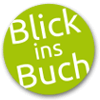Grammaire Abrégée De La Langue Sanscrite, Volumes 1-2, by Léon Rodet, is a comprehensive guide to Sanskrit grammar, originally published in 1860. Written in French, this book serves as an invaluable resource for students and scholars interested in learning Sanskrit and understanding its grammatical structures.
This detailed grammar provides a systematic approach to understanding the intricacies of Sanskrit, making it an essential text for those studying ancient languages and comparative linguistics. With its thorough explanations and clear examples, Grammaire Abrégée De La Langue Sanscrite offers a rich and enduring contribution to the field of Sanskrit studies.
This work has been selected by scholars as being culturally important, and is part of the knowledge base of civilization as we know it. This work was reproduced from the original artifact, and remains as true to the original work as possible. Therefore, you will see the original copyright references, library stamps (as most of these works have been housed in our most important libraries around the world), and other notations in the work.
This work is in the public domain in the United States of America, and possibly other nations. Within the United States, you may freely copy and distribute this work, as no entity (individual or corporate) has a copyright on the body of the work.
As a reproduction of a historical artifact, this work may contain missing or blurred pages, poor pictures, errant marks, etc. Scholars believe, and we concur, that this work is important enough to be preserved, reproduced, and made generally available to the public. We appreciate your support of the preservation process, and thank you for being an important part of keeping this knowledge alive and relevant.
 Und dann auf "Zum Home-Bildschirm [+]".
Und dann auf "Zum Home-Bildschirm [+]".











